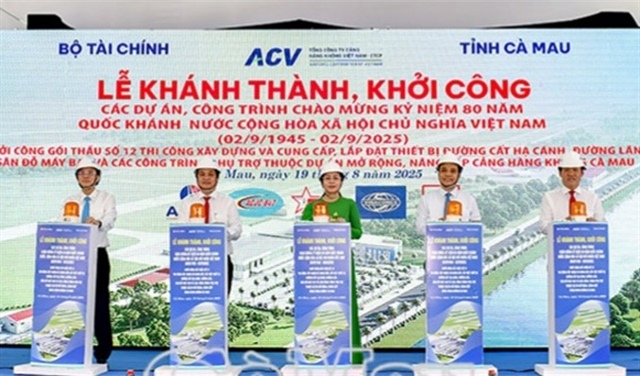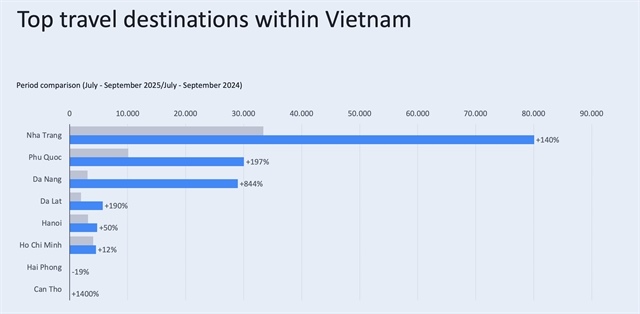Firms need to be proactive to take advantage of CPTPP: Official
Firms need to be proactive to take advantage of CPTPP: Official
Whether businesses are proactive in implementing the Comprehensive and Progressive Agreement for Trans-Pacific Partnership (CPTPP) will be essential in determining their success or failure, Deputy Minister of Industry and Trade (MoIT) Tran Quoc Khanh told a symposium in Ha Noi on Thursday.

Khanh cited self-reform as the biggest challenge to enterprises, saying they should be aware of remaining competitive in the market economy.
The State would assist businesses in this field, he said, adding that if handled well, CPTPP would create conditions for Viet Nam to attract more investment and boost exports.
Strong investment from major groups into Viet Nam had turned the Southeast Asian country into their new production market, he said.
CPTPP took effect in Viet Nam on January 14, 2019.
Chairman of the Viet Nam Chamber of Commerce and Industry (VCCI) Vu Tien Loc said that in the first three months of implementation, the deal had opened up opportunities for 700,000 businesses and hundreds of thousands of household businesses.
The trade pact would help Viet Nam be exempted from a large percentage of tariffs from member countries, he added.
But it also comes with challenges. Loc pointed to technical and food safety barriers.
At the event, participants discussed measures to optimise opportunities from CPTPP for key export sectors such as garment-textile and footwear, and methods to promote competitiveness and public-private co-operation.
Vu Duc Giang, chairman of the Viet Nam Textile and Apparel Association (VITAS), said that while CPTPP had become the backbone of the country’s garment and textile sector, the industry had not yet adapted to the new business climate. VITAS had made several proposals for the Government to review a comprehensive plan for the sector.
“The Government’s solutions and strategic orientation for the garment and leather shoe industries must meet CPTPP requirements for water use, electricity and labour,” he said. “The Government should not allow localities to grant licences to investors in the industry themselves.”
He said the sector needed the State help to develop human resources for the industry, noting a particular shortage of dyeing engineers.
The chairman made suggestions for the sector’s development over the next two decades. He said it must invest in the dyeing industry and that the MoIT should help build a support industry strategy.
He also recommended promoting transparency.
Nguyen Van Tuan, chairman of the Viet Nam Cotton and Spinning Association (VICOSA) said the garment and textile sector posted strong growth over the past 18 years, but most of the funding was domestic.
Without CPTPP, foreign firms did not invest in Viet Nam’s garment and textile industry because the sector’s scale in China was too big. "But foreign investors now account for up to 70 per cent of garment and textile business in Viet Nam."
The trade pact therefore had been both an opportunity and a challenge for Viet Nam, he said.
“We need a specific plan to build large factories,” he said. “There also need to be policies on investment promotion and the treatment of wastewater and solid waste.”
According to Phan Thi Thanh Xuan, vice chairwoman cum general secretary of the Viet Nam Leather, Footwear and Handbag Association, the leather shoe industry’s exports has grown significantly in the past few years. There are now 500 businesses exporting leather shoes.
“Our survey showed that Vietnamese leather shoes firms have not taken opportunities from CPTPP,” Xuan said. “They have not had clear information about markets and materials. To overcome trade barriers, local businesses should have strategies, especially those relating to material issues.”
Nearly 300 representatives from ministries and departments as well as domestic and international organisations, associations, institutions and businesses participated in the symposium.
CPTPP was signed by Australia, Brunei, Canada, Chile, Japan, Malaysia, Mexico, New Zealand, Peru, Singapore and Viet Nam in March 2018. It came into force in December 2018 in Mexico, Japan, Singapore, New Zealand, Canada and Australia, the first six countries to ratify the pact.
It is one of the most comprehensive trade deals ever, stripping 98 per cent of tariffs for the 11 countries with a combined GDP of more than US$13.8 trillion and close to 500 million consumers.
CPTPP member states form a giant market with 500 million consumers, accounting for 15 per cent of global trade turnover.





















